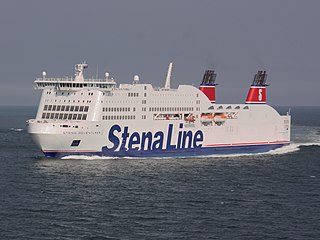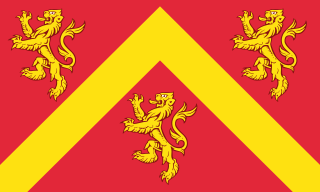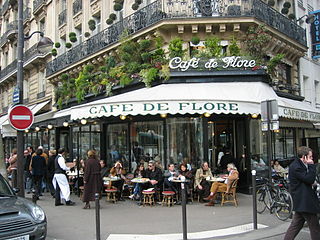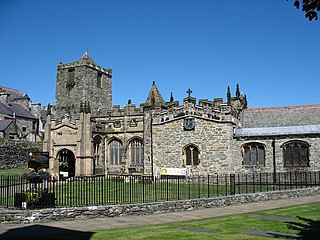
Holyhead is a town in Wales and a major Irish Sea port serving Ireland. It is also a community and the largest town in the Isle of Anglesey county, with a population of 13,659 at the 2011 census. Holyhead is on Holy Island, which is separated from Anglesey by the Cymyran Strait and was originally connected to Anglesey via the Four Mile Bridge and now by the Stanley Embankment.

Holy Island is an island on the western side of the larger Isle of Anglesey, Wales, from which it is separated by a narrow, winding channel. It is called "Holy" because of the high concentration of standing stones, burial chambers, and other religious sites on the small island. The alternative English name of the island is Holyhead Island. According to the 2011 UK Census, the population was 13,659, of which 11,431 (84%) lived in the largest town, Holyhead.

Amlwch is the most northerly town in Wales and is a community. It is situated on the north coast of the Isle of Anglesey, on the A5025 which connects it to Holyhead and to Menai Bridge. As well as Amlwch town and Amlwch Port, other settlements within the community include Burwen, Porthllethog/Bull Bay and Pentrefelin. The town has a beach in Llaneilian, and it has significant coastal cliffs. Tourism is an important element of the local economy. At one time it was a booming mining town that became the centre of a vast global trade in copper ore. The harbour inlet became a busy port and significant shipbuilding and ship repair centre, as well as an embarkation point with boats sailing to the Isle of Man and to Liverpool. A number of the houses date from the 19th century and add to the atmosphere of the town.

Moelfre is a village, community and electoral ward on the north-east coast of the Isle of Anglesey in Wales. The community area covers the village and harbour, and several smaller, dispersed settlements. It includes six scheduled Iron Age hut groups and many other sites of archaeological interest. The harbour was formerly a local fishing port; a lifeboat station has been based here since 1854. Among many shipwrecks off the coast was that of the Royal Charter in 1859. Near the modernised lifeboat station is the RNLI Seawatch Centre. The coastline includes a rocky headland north of the village and a large sandy beach at Lligwy Bay, both traversed by the Anglesey Coastal Path.
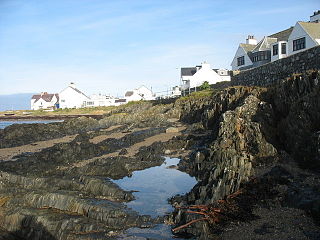
RhosneigrWelsh pronunciation is a village in the south-west of Anglesey, North Wales. It is situated on the A4080 road some 10 km south-east of Holyhead, and is on the Anglesey Coastal Path. From the clock at the centre of the village can be seen RAF Valley and Holyhead Mountain. The major towns of Holyhead and Llangefni and the city of Bangor are all within easy travelling distance. It is the most expensive place to live in Anglesey in terms of house prices. The village is very anglicised.
Salt Island is joined to Holy Island, Anglesey, in North Wales. It is a natural provider of shelter for the town's Old Harbour from the Irish Sea and is part of the Port of Holyhead.

Trearddur or Trearddur Bay is a village, seaside resort and community south of Holyhead on the west coast of Holy Island off the north-west coast of Anglesey in Wales.
The Anglesey Football League is a football league in Anglesey, Wales, and is equivalent to the sixth level of the Welsh football league system in North Wales. The champions are promoted to the Gwynedd League.

Tenby Lifeboat Station is a lifeboat station in Tenby, Pembrokeshire, Wales that has been situated to the east of the town since 1852, three generations having been built; the original and updates in 1905 and 2005. The station currently houses two lifeboats.

Penmon is a promontory, village and ecclesiastical parish on the south-east tip of the Isle of Anglesey in Wales, about 3 miles (4.8 km) east of the town of Beaumaris. It is in the community of Llangoed. The name comes from Welsh: pen and Môn, which is the Welsh word for Anglesey. It is the site of a historic monastery and associated 12th-century church. Walls near the well next to the church may be part of the oldest remaining Christian building in Wales. Penmon also has an award-winning beach and the Anglesey Coastal Path follows its shores. Quarries in Penmon have provided stone for many important buildings and structures, including Birmingham Town Hall and the two bridges that cross the Menai Strait. The area is popular with locals and visitors alike for its monuments, tranquillity, bracing air and fine views of Snowdonia to the south across the Menai Strait.

Rhoscolyn is a village and community located on Holy Island, Anglesey, Wales. It is just over five miles south of Holyhead and is the most southerly settlement on the island. The name Rhoscolyn is said to mean "The Moor" (Rhos) of The Column (colyn), referring to a pillar which the Romans put up to mark the edge of their territories. The community population taken from the 2011 census was 542. The community includes the village of Four Mile Bridge.
The Anglesey Central Railway was a 17.5-mile (28.2 km) standard-gauge railway in Anglesey, Wales, connecting the port of Amlwch and the county town of Llangefni with the North Wales Coast Line at Gaerwen. Built as an independent railway, the railway opened in portions from 1864 to 1867. Due to financial troubles the railway was sold to the London and North Western Railway in 1876, which invested significantly in the infrastructure. Operation continued under various companies during the 20th century, but passenger services were withdrawn in 1964 as part of the Beeching Axe. Industrial freight services continued until 1993. The railway's tracks remain and local groups have demonstrated an interest in restoring services as a heritage railway.

Llanddeusant is a small linear village, on Anglesey, North Wales about 10 miles (16 km) north east of Holyhead. The village takes its name from its parish church which is dedicated to St. Marcellus and Saint Marcellina.

Porthdinllaen, is a small coastal village in the Dwyfor locality on the Llŷn Peninsula within Gwynedd, Wales, located on a small promontory, and historically in Caernarfonshire. It is near the larger village of Morfa Nefyn.

Trwyn Du Lighthouse, also known as Penmon Lighthouse, is a lighthouse between Black Point near Penmon and Ynys Seiriol, or Puffin Island, at the eastern extremity of Anglesey, marking the passage between the two islands.
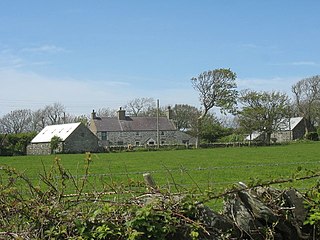
Llanfachraeth is a village and community in the Welsh county of Anglesey. It is located near the west coast of the island, at the head of the Alaw estuary, 6.2 miles (10.0 km) east of Holyhead, 11.7 miles (18.8 km) south west of Amlwch and 11.3 miles (18.2 km) north west of Llangefni. The A5025 road runs through the village. A bus service operates along this road daily, except for Sundays, running between Cemaes, Llanfaethlu, Llanfachraeth and Holyhead. The Wales Coast Path is forced inland here to cross the Afon Alaw. The village has a pub and accommodation is provided by the Holland Hotel.

The South Stack Lighthouse is built on the summit of a small island off the north-west coast of Holy Island, Anglesey, Wales. It was built in 1809 to warn ships of the dangerous rocks below.

Holyhead Lifeboat Station is a Royal National Lifeboat Institution (RNLI) lifeboat station in the coastal town of Holyhead, Anglesey, Wales. It is one of the three oldest lifeboat stations situated on the North Wales coast, a disused building of which houses the Holyhead Maritime Museum.

Church Bay is a settlement located on the north west coast of Anglesey, Wales, United Kingdom.






